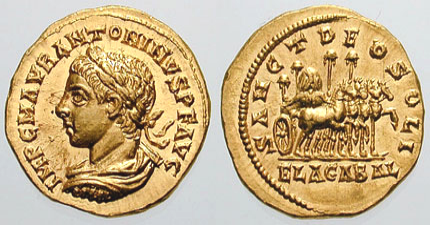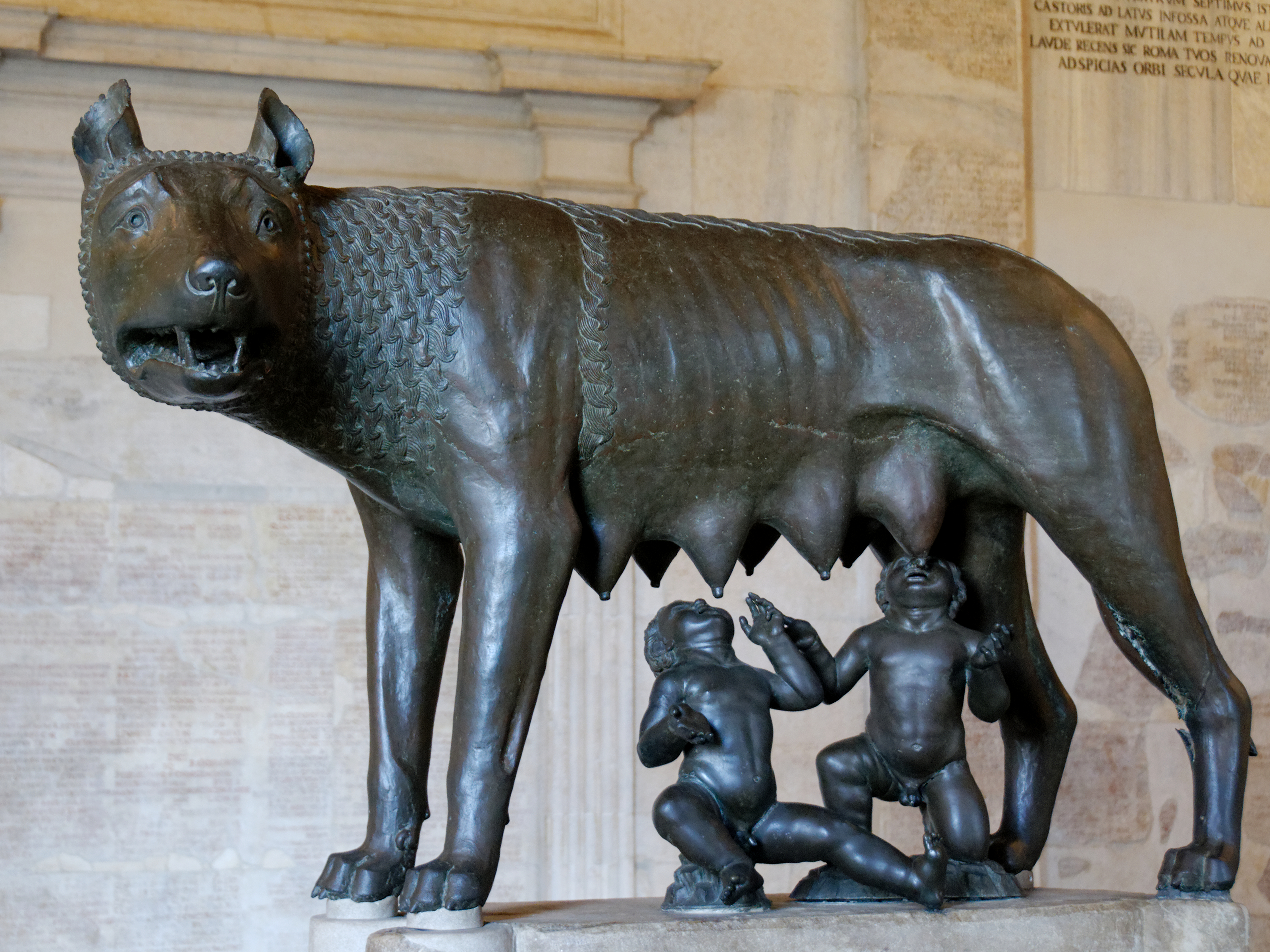|
Marcus Julius Gessius Bassianus
Marcus Julius Gessius BassianusPrado, ''The Emperor Elagabalus: Fact or Fiction?'', p. xxiii (flourished 3rd century) was a ''Magister'' (master) in the Arval Brethren during the reign of Roman emperor Caracalla who ruled from 212 until 217. Bassianus seems to be linked to the ''Julii'' and the ''Bassiani''. From his name, could point to him as a possible son of the Syrian Roman nobles Marcus Julius Gessius Marcianus and Julia Avita Mamaea, being a possible brother of Roman emperor Alexander SeverusBirley, ''Septimius Severus: The African Emperor'', p. 222 and his sister, Theoclia. If this is correct, Bassianus was a relation to the Royal family of Emesa and the Severan dynasty of the Roman Empire. Bassianus was not a known Priest of the cult of Elagabalus.Prado, ''The Emperor Elagabalus: Fact or Fiction?'', p. 215 Although he was a Roman Priest, was unable to attend the ceremonies of the Arval Brethren in Rome, probably due to Bassianus being based in the East. References So ... [...More Info...] [...Related Items...] OR: [Wikipedia] [Google] [Baidu] |
Arval Brethren
In ancient Roman religion, the Arval Brethren ( la, Fratres Arvales, "Brothers of the Fields") or Arval Brothers were a body of priests who offered annual sacrifices to the Lares and gods to guarantee good harvests. Inscriptions provide evidence of their oaths, rituals and sacrifices. Origin Roman legend held that the priestly college was originated by Romulus, first king of Rome, who took the place of a dead son of his nurse Acca Laurentia, and formed the priesthood with the remaining eleven sons. They were also connected originally with the Sabine priesthood of ''Sodales Titii'' who were probably originally their counterpart among the Sabines. Thus, it can be inferred that they existed before the founding of the city.Aulus Gellius VII 7, 7; Pliny XVII 2, 6. There is further proof of the high antiquity of the college in the verbal forms of the song with which, down to late times, a part of the ceremonies was accompanied, and which is still preserved. They persisted to the impe ... [...More Info...] [...Related Items...] OR: [Wikipedia] [Google] [Baidu] |
Roman Empire
The Roman Empire ( la, Imperium Romanum ; grc-gre, Βασιλεία τῶν Ῥωμαίων, Basileía tôn Rhōmaíōn) was the post-Republican period of ancient Rome. As a polity, it included large territorial holdings around the Mediterranean Sea in Europe, North Africa, and Western Asia, and was ruled by emperors. From the accession of Caesar Augustus as the first Roman emperor to the military anarchy of the 3rd century, it was a Principate with Italia as the metropole of its provinces and the city of Rome as its sole capital. The Empire was later ruled by multiple emperors who shared control over the Western Roman Empire and the Eastern Roman Empire. The city of Rome remained the nominal capital of both parts until AD 476 when the imperial insignia were sent to Constantinople following the capture of the Western capital of Ravenna by the Germanic barbarians. The adoption of Christianity as the state church of the Roman Empire in AD 380 and the fall of the Western ... [...More Info...] [...Related Items...] OR: [Wikipedia] [Google] [Baidu] |
Julii
The gens Julia (''gēns Iūlia'', ) was one of the most prominent patrician families in ancient Rome. Members of the gens attained the highest dignities of the state in the earliest times of the Republic. The first of the family to obtain the consulship was Gaius Julius Iulus in 489 BC. The gens is perhaps best known, however, for Gaius Julius Caesar, the dictator and grand uncle of the emperor Augustus, through whom the name was passed to the so-called Julio-Claudian dynasty of the first century AD. The Julius became very common in imperial times, as the descendants of persons enrolled as citizens under the early emperors began to make their mark in history.''Dictionary of Greek and Roman Biography and Mythology'', vol. II, pp. 642, 643. Origin The Julii were of Alban origin, mentioned as one of the leading Alban houses, which Tullus Hostilius removed to Rome upon the destruction of Alba Longa. The Julii also existed at an early period at Bovillae, evidenced by a very a ... [...More Info...] [...Related Items...] OR: [Wikipedia] [Google] [Baidu] |
Emesene Dynasty
The Emesene (or Emesan) dynasty, also called the Sampsigeramids or the Sampsigerami or the House of Sampsigeramus ( ar, آل شمسيغرام, translit=ʾĀl Šamsīġirām), were a Roman client dynasty of Arab priest-kings known to have ruled by 46 BC from Arethusa and later from Emesa, Syria, until between 72 and 78/79, or at the latest the reign of Emperor Antoninus Pius (138–161). Iamblichus, the famous Neoplatonist philosopher of the third century, was one of their descendants, as was empress Julia Domna, matriarch of the Severan dynasty. Onomastics Most modern sources declare the family to be of Arab origin. Roman sources such as Herodian describe the family as Phoenicia, Phoenician by genos or stock. Some members of the family such as Julius Bassianus, father of Julia Domna, Julia Domma, are described in Roman sources as "a priest of the Sun, whom the Phoenicians, from whom he sprang, call Elagabalus". Writer Heliodorus of Emesa, a descendant of the family, identified ... [...More Info...] [...Related Items...] OR: [Wikipedia] [Google] [Baidu] |
Priests Of The Roman Empire
A priest is a religious leader authorized to perform the sacred rituals of a religion, especially as a mediatory agent between humans and one or more deities. They also have the authority or power to administer religious rites; in particular, rites of sacrifice to, and propitiation of, a deity or deities. Their office or position is the 'priesthood', a term which also may apply to such persons collectively. A priest may have the duty to hear confessions periodically, give marriage counseling, provide prenuptial counseling, give spiritual direction, teach catechism, or visit those confined indoors, such as the sick in hospitals and nursing homes. Description According to the trifunctional hypothesis of prehistoric Proto-Indo-European society, priests have existed since the earliest of times and in the simplest societies, most likely as a result of agricultural surplus and consequent social stratification. The necessity to read sacred texts and keep temple or church record ... [...More Info...] [...Related Items...] OR: [Wikipedia] [Google] [Baidu] |
3rd-century Romans
The 3rd century was the period from 201 ( CCI) to 300 ( CCC) Anno Domini (AD) or Common Era (CE) in the Julian calendar.. In this century, the Roman Empire saw a crisis, starting with the assassination of the Roman Emperor Severus Alexander in 235, plunging the empire into a period of economic troubles, barbarian incursions, political upheavals, civil wars, and the split of the Roman Empire through the Gallic Empire in the west and the Palmyrene Empire in the east, which all together threatened to destroy the Roman Empire in its entirety, but the reconquests of the seceded territories by Emperor Aurelian and the stabilization period under Emperor Diocletian due to the administrative strengthening of the empire caused an end to the crisis by 284. This crisis would also mark the beginning of Late Antiquity. In Persia, the Parthian Empire was succeeded by the Sassanid Empire in 224 after Ardashir I defeated and killed Artabanus V during the Battle of Hormozdgan. The Sassan ... [...More Info...] [...Related Items...] OR: [Wikipedia] [Google] [Baidu] |
Ancient Rome
In modern historiography, ancient Rome refers to Roman civilisation from the founding of the city of Rome in the 8th century BC to the collapse of the Western Roman Empire in the 5th century AD. It encompasses the Roman Kingdom (753–509 BC), Roman Republic (509–27 BC) and Roman Empire (27 BC–476 AD) until the fall of the western empire. Ancient Rome began as an Italic settlement, traditionally dated to 753 BC, beside the River Tiber in the Italian Peninsula. The settlement grew into the city and polity of Rome, and came to control its neighbours through a combination of treaties and military strength. It eventually dominated the Italian Peninsula, assimilated the Greek culture of southern Italy ( Magna Grecia) and the Etruscan culture and acquired an Empire that took in much of Europe and the lands and peoples surrounding the Mediterranean Sea. It was among the largest empires in the ancient world, with an estimated 50 to 90 million inhabitants, roughly 20% of t ... [...More Info...] [...Related Items...] OR: [Wikipedia] [Google] [Baidu] |
Elagabalus (deity)
Elagabalus (), Aelagabalus, Heliogabalus, () or simply Elagabal (Aramaic alphabet, Aramaic: 𐡁𐡋𐡄𐡂𐡀𐡋 ''ʾĕlāhgabāl'' or 𐡁𐡋𐡄𐡀𐡂𐡀𐡋 ''ʾĕlāhaʾgabāl''; Arabic: إله الجبل ''Ilah al-Jabal'', "mountain god") was an Ancient Semitic religion, Arab-Roman mythology, Roman sun god, initially venerated in Emesa (modern-day Homs), Syria. Although there were many variations of the name, the god was consistently referred to as Elagabalus in Roman coins and inscriptions from AD 218 on, during the reign of emperor Elagabalus. Cult Elagabalus was initially venerated at Emesa in Syria, where the Arab Emesan dynasty acted as its priests. The name is the Latinisation of names, Latinised form of the Arabic "Ilah al-Jabal" ("إله الجبل"), the Emesene manifestation of the deity, which is Arabic for "God of the Mountain." Elagabalus was the religious "lord", or Ba'al, of Emesa. The deity successfully preserved Arab characteristics, bot ... [...More Info...] [...Related Items...] OR: [Wikipedia] [Google] [Baidu] |
Severan Dynasty
The Severan dynasty was a Ancient Rome, Roman imperial dynasty that ruled the Roman Empire between 193 and 235, during the Roman imperial period (chronology), Roman imperial period. The dynasty was founded by the emperor Septimius Severus (), who rose to power after the Year of the Five Emperors as the victor of the civil war of 193–197, and his wife, Julia Domna. After the short reigns and assassinations of their two sons, Caracalla () and Geta (emperor), Geta (), who succeeded their father in the government of the empire, Julia Domna's relatives themselves assumed power by raising Elagabalus () and then Severus Alexander () to the imperial office. The dynasty's control over the empire was interrupted by the joint reigns of Macrinus () and his son Diadumenian (). The dynasty's women, including Julia Domna, the mother of Caracalla and Geta, and her nieces Julia Soaemias and Julia Mamaea, the mothers respectively of Elagabalus and Severus Alexander, and their own mother, Ju ... [...More Info...] [...Related Items...] OR: [Wikipedia] [Google] [Baidu] |
Royal Family Of Emesa
The Emesene (or Emesan) dynasty, also called the Sampsigeramids or the Sampsigerami or the House of Sampsigeramus ( ar, آل شمسيغرام, translit=ʾĀl Šamsīġirām), were a Roman client dynasty of Arab priest-kings known to have ruled by 46 BC from Arethusa and later from Emesa, Syria, until between 72 and 78/79, or at the latest the reign of Emperor Antoninus Pius (138–161). Iamblichus, the famous Neoplatonist philosopher of the third century, was one of their descendants, as was empress Julia Domna, matriarch of the Severan dynasty. Onomastics Most modern sources declare the family to be of Arab origin. Roman sources such as Herodian describe the family as Phoenician by genos or stock. Some members of the family such as Julius Bassianus, father of Julia Domma, are described in Roman sources as "a priest of the Sun, whom the Phoenicians, from whom he sprang, call Elagabalus". Writer Heliodorus of Emesa, a descendant of the family, identified himself as "a Phoeni ... [...More Info...] [...Related Items...] OR: [Wikipedia] [Google] [Baidu] |


.jpg)





